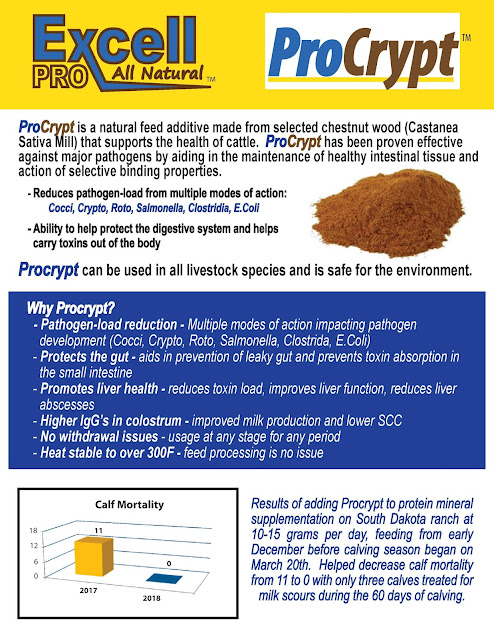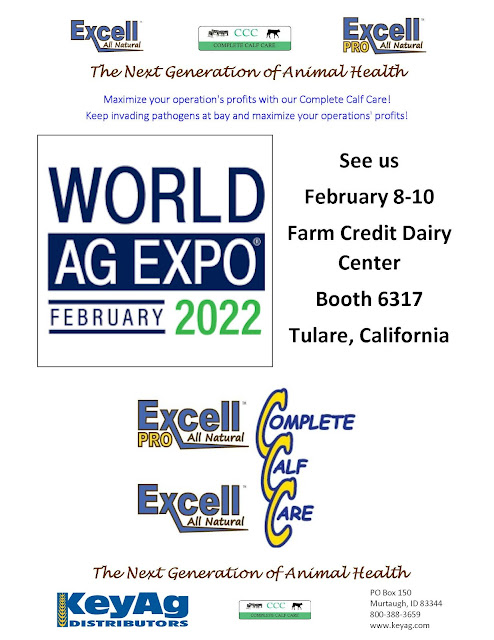If there was any doubt about strength in the global dairy market, it was erased in the second Global Dairy Trade auction of 2022, its 300th trading event. The weighted average jumped 4.6%, biggest increase since Mar. 2, 2021, and followed the 0.3% rise on Jan. 4 and the 1.5% fall on Dec. 21. Traders brought 67.6 million pounds of product to market, with the average price climbing to $4,463 U.S., highest since March 2014.
All products offered were in the black, led by whole milk powder, up 5.6%, after holding steady on Jan. 4. Skim milk powder was up 5%, following a 1% increase, and butter was up 5%, after inching 0.3% higher. Anhydrous milkfat was up 0.6%, after slipping 0.7% last time. Cheddar was up 1.1% following a 4.9% jump.
StoneX Dairy Group says the GDT 80% butterfat butter price equates to $2.7252 per pound U.S., up 12.8 cents, and compares to CME butter which closed Friday at $2.9350. GDT Cheddar, at $2.5157, was up 2.7 cents and compares to Friday’s CME block Cheddar at a real bargain $1.8075. GDT skim milk powder averaged $1.7977 per pound, up from $1.7114. Whole milk powder averaged $1.8517 per pound, up from $1.7536. CME Grade A nonfat dry milk closed Friday at $1.8150 per pound.
StoneX’s Dustin Winston says North Asia (which includes China) buyers continue to seem hesitant, market share was up just slightly from the last event, but remain well below last year’s levels. The Middle East picked up a large share of whole milk powder, according to Winston.
Speaking of China, December dairy imports fell a combined 13.4% from December 2020, according to HighGround Dairy’s (HGD) analysis, but adds the caveat; “While there is a lot of red on the table, it is important to remember the data is compared to a record December in 2020 with December 2021 the second highest ever observed despite the year over year losses.”
Whole milk powder imports took the biggest hit, says HGD, down 38%. Skim milk powder was down 21.6%, and whey products were down 31.9%, a 20-month low.
Bloomberg reports that China’s hog herd has rebounded and is now at a six-year high of 449 million, so with the country no longer aggressively building their herd there has been a slowdown in whey demand for piglets, according to HGD.
Staying in the global market; EU November exports were up 1.7% from 2020, according to StoneX, which was stronger than the minus1.3% they forecast. “Exports to China are still rather weak, seeing a month to month decrease of 23%,” says StoneX, “but other countries such as Indonesia, Nigeria, Philippines, and the U.S. are making up for that. Shipments to Indonesia rose 57% month to month and up 38% YoY. Some of the largest month to month gains were butter, yogurt, and whey protein isolates. Liquid milk exports were down from the previous month but are still strong on a YoY basis,” according to StoneX.
Dairy prices here at home strengthened, except for cheese, in the Martin Luther King holiday shortened week. The Cheddar blocks closed Friday at $1.8075 per pound, down 11.25 cents on the week, lowest since Nov. 18, 2021, 24.50 cents below its Jan. 12 peak, but 19.75 cents above a year ago when they fell 11 cents to $1.61.
The barrels, after peaking at $1.96 the previous Friday, closed this week at $1.8125, down 14.75 cents, 42 cents above a year ago, and a half-cent above the blocks. There were 4 sales of block on the week at the CME and 2 of barrel.
StoneX says it hears continued reports of tight butter and nonfat dry milk (NFDM) but not Cheese. “Cheese demand is likely strong, but we have cheese out there to meet that demand. That seems to be the narrative developing this week and spot prices are reflecting that narrative.” Traders await the December Milk Production and Cold Storage reports issued Monday, January 24.
Dairy Market News reports that milk availability varied in the Midwest. Plants running fully staffed operations say milk is available but the discounted prices of $3 and $4 under Class are no longer being offered. Still, there are plants running lighter lines, as employees are short due to COVID related absences. Cheese sales were slowing, according to some, as prices rose and “market tones are lacking the bravado of prior weeks.”
Retail cheese demand is steady to lower in the West while food service is mixed. Contacts note that rising COVID cases in the region have caused a decline in sales. Food service mozzarella sales are, reportedly, increasing as strong demand is present for pizza making, thanks to football playoffs. International cheese demand remains strong but transportation issues caused by a shortage of truck drivers and port congestion continue to cause delays. Cheesemakers say milk is available but delayed deliveries and labor shortages are causing some plants to run reduced schedules, according to DMN. Continuing port woes are likely hurting U.S. exports of cheese despite our competitive prices.
Butter was firing on all cylinders, shooting to a $2.9350 per pound finish Friday, up 21 cents, highest since Sept. 28, 2015, and $1.5325 above a year ago. 32 sales transpired on the week. Butter’s CME record is $3.1350 per pound on Sept. 25, 2015. The U.S. price, while above the GDT, is below European levels.
Midwest churners are calling for cream and have been very active since before the holidays. Freight continues to be the biggest hurdle, particularly moving cream from Idaho and the Mountain States. Butter sales have begun to settle. The holidays were very busy, but prices have caused buyer hesitancy.
Western cream demand is unchanged. Loads of cream are heading to the Midwest though some faced delays from bad weather and a shortage of truck drivers. Butter demand is strong in domestic and international markets and inventories are tight. Butter makers are running below capacity due to labor shortages and delayed deliveries of production supplies, according to DMN.
Grade A nonfat dry milk climbed to $1.85 per pound Tuesday, highest since June 12, 2014, but closed Friday at $1.8150, unchanged on the week, but 64.25 cents above a year ago, on 7 sales for the week.
Dry whey closed at another new record high, 80 cents per pound, up 3 cents on the week and 26 cents above a year ago, with 2 sales reported at the CME.
The good news keeps coming. Per-capita dairy consumption in the U.S. has been growing and is at the highest levels since 1960, according to the National Milk Producers Federation. “Exports in 2021 are on pace for a record,” says NMPF, “and now, with last year’s retail sales data available, we can see that 2020’s gains in grocery-store purchases weren’t just a rechanneling of lost school and restaurant business toward at-home consumption. By comparing 2021 with 2019, we can see that dairy’s gains are built to last, according to data from industry researcher IRI.”
Commercial disappearance remained strong in November, according to USDA data. Cheese totaled 1.18 billion pounds, up 5.2% from Nov. 2020, topping the year ago level for the second consecutive month, and the largest year over year gain of any month since April, according to HGD. HighGround says this was the strongest cheese disappearance on a volume basis of any month on record.
Butter disappearance totaled 232.1 million pounds, up 3.4%, and topped that of a year ago for the fifth consecutive month. Nonfat and skim milk powder totaled 211.3 million pounds, up 1.9%, thanks primarily to exports, though domestic demand was weaker.
HGD’s Lucas Fuess, speaking in the Jan. 24 ‘Dairy Radio Now’ broadcast, said Class III and Class IV futures curves look very good for farmer returns this year but cautioned that demand destruction could occur due to the rising prices.
“If we do get too expensive, there could be some buyers around the world that take a step back and maybe hesitate to purchase U.S. dairy,” he warned, “But in the time being, we don’t see that happening as the world remains short on protein and continues to pay up even at these purchase levels.”
Unfortunately, inflation continues to soar in the U.S. The consumer price index for all food was 287.0, up 6.3% in December from 2020, according to DMN. The dairy products index, at 235.4, was up 1.6%. Fresh whole milk was up 4.9%; cheese, down 0.6%; and butter was up 0.8%.
The February Federal order Class I base milk price was announced by the USDA at $21.64 per hundredweight, up $1.93 from January, $6.10 above February 2021, and the highest Class I price since Dec. 2014. It equates to $1.86 per gallon, up from $1.69 in January and $1.34 a year ago.
The latest Margin Watch (MW) from Chicago-based Commodity and Ingredient Hedging LLC., says “Dairy margins strengthened sharply to start the year as a continued surge in milk prices combined with a mild correction in the feed markets to boost projected profitability.”
“The milk market has caught fire from a perfect storm of declining global production at the same time as demand for dairy products soar,” the MW stated. “USDA’s Foreign Agriculture Service reported record November monthly exports, with 492.1 million pounds of dairy product shipped during the month, up 17.3% from 2020 and 60 million above the previous November record set in 2017. NDM exports of 168.5 million pounds were up 24.7% from 2020, with strong demand from Mexico, the Philippines, Colombia and Vietnam pacing gains. NDM stocks have been declining after reaching a high of 349 million pounds in June, dropping to 196.5 million pounds in November,” the MW reported.
“More milk being diverted away for cheese has caused NDM production to decline since mid-2021, trailing 2020 by 54 million pounds between July and November. November’s production of 155.4 million pounds was down 2.4% from 2020. This helped support Class IV prices, with the USDA announced price in December of $19.88 per cwt. up $6.46 from 2020 and the highest announced price in seven years.”
“Class IV futures are trading above $22 per cwt. in each of the next four months,” according to the MW, “and Fonterra is now forecasting their highest pay price ever as production declines in New Zealand. Feed prices meanwhile have corrected as much-needed rain is forecast for parched areas of Argentina and Southern Brazil while the USDA’s January WASDE report was considered neutral for corn and soybeans,” the MW concluded.
Meanwhile, the National Milk Producers Federation says the Pandemic Market Volatility Assistance Program will provide up to $350 million in pandemic assistance payments to dairy farmers early this year. “This initiative will partially reimburse producers for unanticipated losses created during the COVID-19 pandemic when federal dairy food box purchases weighted heavily toward cheese, combined with a change to the Class I mover formula created the unintended consequence of significant financial losses.”
Payments will reimburse qualified dairy farmers for 80% of the revenue difference per month on up to 5 million pounds of milk marketed and on fluid milk sales from July through December 2020. The payment rate will vary by region based on actual losses on pooled milk related to price volatility. As part of the program handlers also will provide virtual or in-person education to dairy farmers. More details are posted at the NMPF website.
Dairy cow culling increased from the previous month but fell below that of a year ago in December, according to USDA’s latest Livestock Slaughter report.
An estimated 267,800 head were sent to slaughter under federal inspection in December, up 22,500 from November but 5,700 head or 2.1% below December 2020. Culling for the year totaled 3.1 million, up 42,900 or 1.4% from a year ago.
In the week ending Jan. 8, 63,000 dairy cows were sent to slaughter, up 10,600 from the previous week, but 4,500 head or 6.7% below a year ago.
The Agriculture Department’s latest Livestock, Dairy, and Poultry Outlook, issued January 19, mirrored milk price and production projections in the January 12 World Agricultural Supply and Demand Estimates report.
The Outlook also reported that the number of milk cows is projected to continue decreasing in the first part of 2022. For the first half of the year, milk cows are projected to average 9.38 million head. However, in the second half of the year, they are projected to increase to 9.385 million. The estimated number of cows for the year 2022 is 9.385 million, unchanged from last month’s projection. Average yield per cow is projected to be 24,265 pounds, unchanged from last month’s projection.
The December publication of ‘Dairy: World Markets and Trade’, by USDA’s Foreign Agricultural Service, projects that milk production for the top five major exporters will total 647.1 billion pounds in 2022, a modest increase of 0.7% from the total expected for 2021. Milk production totals for the European Union and New Zealand are expected to grow by 0.7% and 0.5%, respectively, says USDA.
























